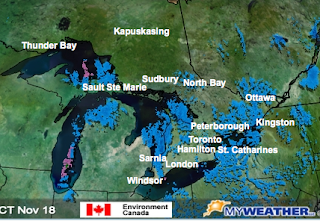
After our trip north to Lake Superior, I was drawn to do some research. One thousand million years old, it is. Created when 2000 degree basaltic lava rose up from the earth, basaltic, rhyolite and gabbroic flows and a crust that sagged into a huge depression.
The sheer immensity of this lake, and its big skies, inspires me. I am still processing all the photos and video. And we only visited the eastern
 portion. Along the drive the mountains rise up, one million years of sediments eroded from mountains in the east. As Dr. Joseph McInnis says, in Fitzerald's Storm: The wreck of the Edmund Fitzgerald, "four gigantic glaciers shuddered out of the arctic", 2 million years ago.
portion. Along the drive the mountains rise up, one million years of sediments eroded from mountains in the east. As Dr. Joseph McInnis says, in Fitzerald's Storm: The wreck of the Edmund Fitzgerald, "four gigantic glaciers shuddered out of the arctic", 2 million years ago.It was the last glacier, Wisconsin, 115,000 years ago that moved like a giant cougar across the land, tearing of the hill tops, with such weight and "granite teeth", that scoured, stripped, ground, and pulverized the rock. The massive sand and gravel pits dot the highways, evidence of the massive movement of earth.

The ice, he says, was hundreds of fathoms deep and it gouged sandstone, siltstone and shale. The book is an excellent read, and includes some geological information. The lake bounds Minnesota, Wisconsin, Michigan and Ontario. The lake is 400 miles from east to west, 160 from north to south. It contains 1/10 of the world's fresh water.
In the 1800s the whites moved in to clear cut the land, ripping the pine and spruce to transform them into ships and houses. Them, in the 1840s, copper miners from England and Germany began exploitations of the
 land. A major transportation route, the lake holds 350 ships that have sunk in its cruel, unpredictable weather. With a maximum depth of 1300 feet, it roils with the lake effect winds picking up moisture much as the glaciers did many moons ago. During the sinking of the Edmund Fitzgerald (Nov. 10, 1975), it raised 16' high waves, with winds of 58 knots. A person would last 30 minutes in November waters. Accidents on the ship were common in shifting seas, with metal bulkheads and dangerous, slippery conditions.
land. A major transportation route, the lake holds 350 ships that have sunk in its cruel, unpredictable weather. With a maximum depth of 1300 feet, it roils with the lake effect winds picking up moisture much as the glaciers did many moons ago. During the sinking of the Edmund Fitzgerald (Nov. 10, 1975), it raised 16' high waves, with winds of 58 knots. A person would last 30 minutes in November waters. Accidents on the ship were common in shifting seas, with metal bulkheads and dangerous, slippery conditions.
 In the meantime, the First Nations, Ojibwe in the east, perceived the lake to be a living, breathing body, always moving, changing, with many facets. The Fog had a big impact on life. Their lives revolved around nature, with artifacts from 8800 BCE having been found around the lake. The forest's harvest of maple syrup, spring fish runs, berries, herbs and, of course, migrating geese made it prime for living off of the land.
In the meantime, the First Nations, Ojibwe in the east, perceived the lake to be a living, breathing body, always moving, changing, with many facets. The Fog had a big impact on life. Their lives revolved around nature, with artifacts from 8800 BCE having been found around the lake. The forest's harvest of maple syrup, spring fish runs, berries, herbs and, of course, migrating geese made it prime for living off of the land.
No comments:
Post a Comment